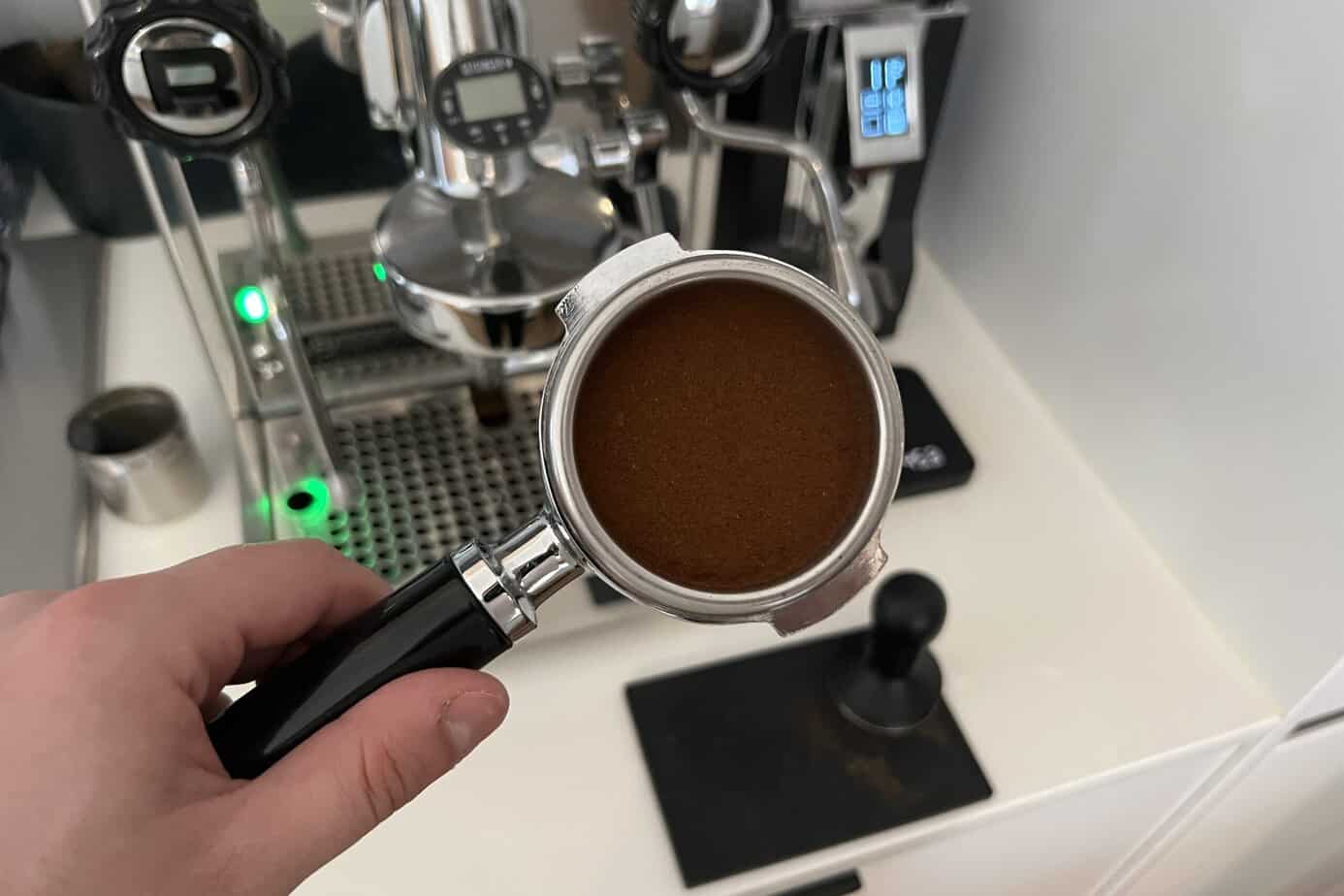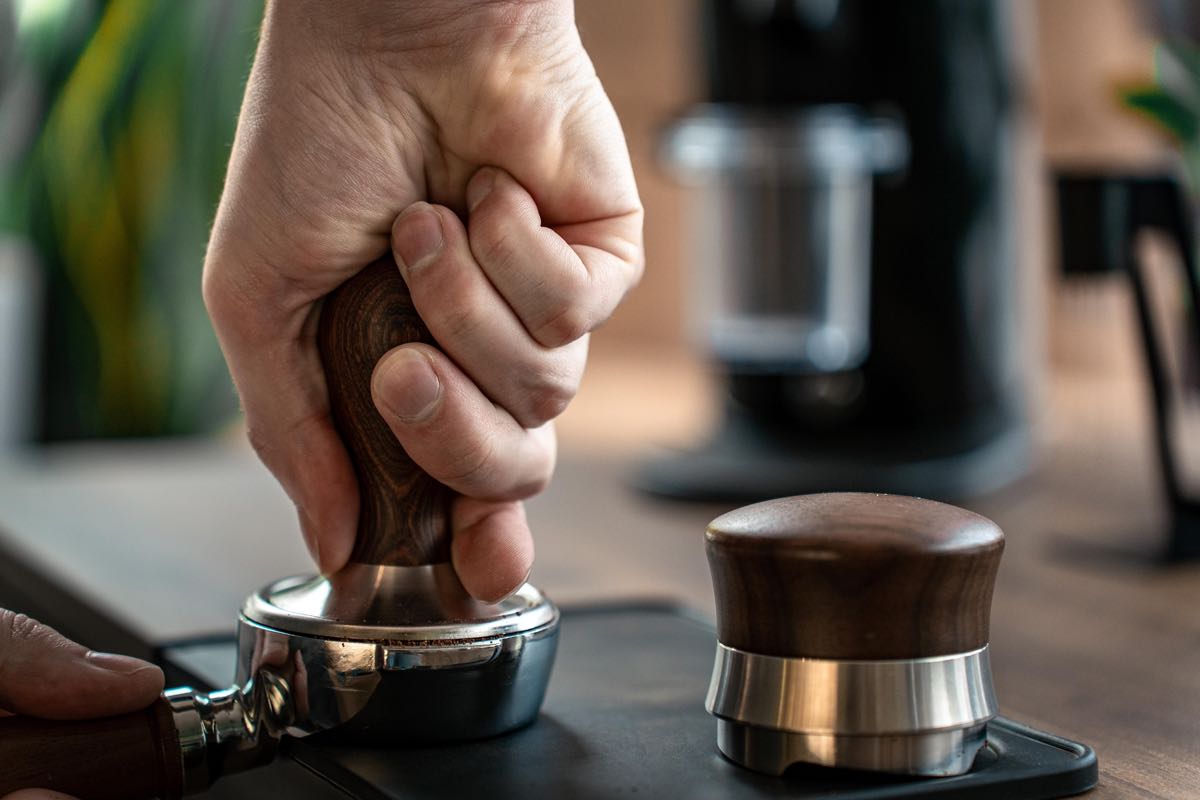Making espresso at home is an intricate blend of science and artistry, particularly when it comes to the tamping process. How much force should you apply to the coffee grounds before pulling a shot? For those passionate about home brewing, finding the right tamping pressure can significantly impact the quality of the espresso—determining whether it’s a rich, flavorful cup or a poorly extracted one. Let’s explore the essentials of tamping. Learn everything about this innovative coffee machine in our DeLonghi Eletta Explore Espresso Machine with Cold Brew review

Why Tamping Matters
Tamping is crucial as it compresses the coffee grounds, creating a compact, uniform surface for water to flow through during extraction. This process helps eliminate air pockets, which can result in "channeling." Channeling occurs when water travels unevenly through the grounds, leading to weak or inconsistent espresso. Dive into the features and performance in our DeLonghi Dinamica Automatic Coffee & Espresso Machine review
Proper tamping promotes an even extraction, allowing the coffee's full flavor profile to be expressed. Neglecting this step can cause water to rush through the grounds too rapidly, resulting in under-extraction and producing a sour, watery shot. Explore the versatility of this model in our DeLonghi Magnifica Evo Espresso Machine with Frother review
Determining the Right Pressure for Tamping
The common recommendation is to apply around 30 pounds (13.6 kg) of pressure. However, for home baristas, achieving precision in pressure is less critical than maintaining consistency and an even tamp. Discover the benefits and features of this machine in our DeLonghi Magnifica Evo review
Press the tamper down until the coffee grounds are fully compressed and no longer moving. Once you feel the grounds are compact and firm, you’ve exerted sufficient pressure. Pushing beyond this point can lead to over-extraction, imparting bitter notes. Find out why this model stands out in our DeLonghi Magnifica S review
Rather than fixating on a specific weight, concentrate on achieving a level, steady tamp across the coffee bed. Once you’ve accomplished an evenly compressed surface, you’re ready to brew. Explore the features and performance of this machine in our Philips 5500 LatteGo review
Steps to Achieve a Consistent Tamp
Level the Grounds
Begin by evenly distributing the coffee grounds in the portafilter. Uneven grounds can lead to inconsistent tamping and channeling. You can lightly tap the portafilter or use a distribution tool to achieve a level surface. Dive into the details of the Philips 5400 LatteGo review
Hold the Tamper Correctly
Maintain a straight wrist with your elbow at a 90-degree angle while gripping the tamper. This position allows you to apply even pressure without straining. Use three fingers to grip the handle, guiding it with your thumb and index finger to keep it level. Compare these two models in our Philips LatteGo 5400 vs 4300 review
Apply Even Pressure
Press the tamper into the coffee grounds until you encounter resistance, a process referred to as “tamping until resistance.” After the grounds are compact, avoid adding extra pressure, as this can adversely affect extraction. Discover the differences between these machines in our Philips 3200 vs 4300 vs 5400 review
Prioritize Consistency Over Force
While 30 pounds of pressure is a common guideline, ensuring a consistent tamping force is more crucial. Strive for uniform pressure with every shot to guarantee repeatable results. Learn how these two models compare in our Philips 3200 vs 4300 review
Use a Stable Surface
Utilize a tamping mat or another sturdy surface to provide a solid base for tamping. This helps prevent the portafilter from moving and ensures a level tamp. Uncover the key distinctions in our Philips 3200 vs 5400 review
Common Tamping Mistakes to Avoid
Watch out for these common pitfalls when tamping:
- Uneven Tamping: An angled tamper can create uneven water flow, leading to both under-extracted and over-extracted areas in your espresso.
- Inappropriate Pressure: Applying too much pressure can result in bitterness from over-extraction, while too little can lead to weak, under-extracted shots.
- Ignoring Ground Distribution: Failing to evenly spread the grounds before tamping can cause channeling. Always ensure the grounds are level prior to tamping.
Tools to Improve Your Tamping Technique
If you’re looking to enhance your tamping consistency, consider using tools like coffee distribution tools or Weiss Distribution Technique (WDT) tools. These help distribute the grounds evenly, minimizing clumping and channeling.
Advanced tampers equipped with pressure sensors are also available, allowing beginners to practice applying consistent tamping force. These tools can be particularly beneficial for achieving uniform results.

Conclusion: Consistency is Essential for Success
Tamping is not merely about reaching a specific pressure; it’s about creating an evenly compressed coffee bed each time. By emphasizing consistent pressure and proper ground distribution, you can reliably produce high-quality espresso shots at home.
With practice, you’ll develop an intuition for when the coffee is perfectly compressed. Embrace the process, enjoy the journey, and soon you’ll be crafting exceptional espresso like a professional!
